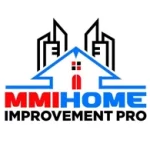Chimney cleaning and maintenance is a task that can be pretty tedious. A chimney cleaning service can help you get everything in order, but it is still essential to put some effort into the process yourself. As a homeowner, you probably know the importance of cleaning your chimney. Chimneys are essential to a home’s structure, but some people don’t know how to maintain a chimney properly. However, this is a necessary process that can prevent fires or other dangerous situations. Here is a step-by-step guide to help you make the best of the task.
Complete Guide About Chimney Cleaning And Maintenance
A chimney sweep is your best friend when it comes to keeping your fireplace safe and functional. It’s made up of a set of tubes that direct smoke out of the house, and it’s often neglected until it has a problem. If you want to take care of your chimney, here’s everything you need to know about chimney cleaning and maintenance.
Learn more about Advantages of Chimney Cleaning.
Tools And Materials Needed For Chimney Cleaning And Maintenance
You will need following materials:
- Use a HEPA-rated vacuum to control dust, collect soot, and remove debris from the chimney flue.
- Drip towels
- steel-wire broom
- Bright spot
- Utilize Wire brushes to remove brushable creosote from your fireplace flue.
- At the same time, one may use drop cloths to cover and protect your floors and furnishings.
- Use a powerful HEPA-filtered vacuum for dust management.
Step-by-Step Guide: How To Perform Chimney Cleaning And Maintenance
The firebox, flue liner, smoke chamber, damper, and smoke shelf are among the components of a chimney that must be cleaned. We sweep your fireplace cleaning from the bottom to the top for best results and dust control.
Step 1:
To protect your flooring and furniture during the sweep process, we start by setting up a drop cloth in the work area.
Step 2:
Turning on the HEPA vacuum, we carefully move up through the liner and flue toward the chimney top with a spiral wire brush inserted into the flue using expanding rods.
Step 3:
To remove any brushable soot deposits, turn the brush within the chimney counterclockwise at this point.
Step 4:
After you have swept the flu, our sweeps will vacuum and brush away any soot buildup near the firebox, smoke shelf, and damper.
Your professional chimney sweep service with CSIA certification will inspect your chimney after cleaning it. Give you a report detailing any repairs that you may require for chimney maintenance.
Is It Necessary To Clean The Chimney?
To clear your chimney of soot, obstructions, and creosote buildup, you’ll need to clean it. The buildup of soot and creosote inside a chimney flue reduces the fireplace’s draw. moreover, it also increases the risk of a chimney fire if you do not clean it regularly. High-flammability creosote is a result of burning wood. The type of wood you choose, how you burn it, and the overall health of your chimney system all affect how quickly creosote accumulates inside your chimney flue.
The firewood will burn more efficiently and generate more heat if it is older and drier (seasoned). Unseasoned or green wood will burn more quickly and accumulate more creosote. Furthermore, we advise that you routinely get your chimney inspection by a certified chimney professional. These professionals have the education required to recognize problems with venting and deterioration.
Contact us for Range Hood Duct Installation in Smyrna
Do I Need To Sweep My Chimney Often?
As required, sweeping should be done. We will advise having the chimney swept if we see a minimum 1/8-inch soot buildup there.
No matter how frequently they burn, National Fire Protection Association advise homeowners to have their professional chimneys examination once a year to ensure they are ready to use. We will advise having the chimney swept if we find chimney creosote, an 8-inch soot buildup.
Creosote accumulates and builds-up when wood does not burn entirely, whether because of using unseasoned wood or insufficient airflow (or both). The consequence of oils in the wood that isn’t wholly burnt off is creosote accumulation. These are transported upward with the smoke, which cools as it rises, allowing the byproducts to combine with moisture and other chemicals before condensing on the flue wall.
How Does Creosote Buildup
Your chimney’s creosote buildup goes through three stages:
Stage 1:
Creosote buildup initially appears as a loose, flaky deposit that is simple to remove during a sweep.
Stage 2:
Creosote produces a tar-like layer that is challenging to sweep after numerous burns and cooling and condensing cycles. At this point, it needs to be physically scraped from the inside of the flu.
Stage 3:
The airflow has been constrained by many collecting layers of deposits that have hardened due to high heat.
It will begin to pop and drip like candle wax inside your flue as it is heated. Given the flammability of creosote, this stage is especially dangerous and can lead to chimney fires beginning in the flue and moving upward to the roofing.
During your annual chimney inspection, a CSIA-certified pro chimney sweep will identify whether creosote deposits are present and recommend the appropriate solution to protect your chimney and home from a chimney fire.
How Much Do Chimney Cleaning And Maintenance for Sweeps Cost?
Depending on your appliance and the level of inspection done during the sweeping, having your chimney professionally cleaned might cost anywhere between $200 and $350.
